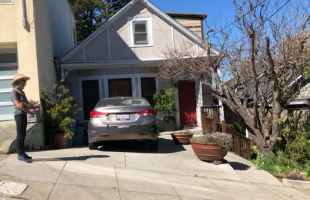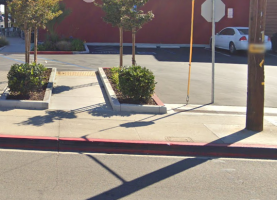Yikes
SAWHORSE
11B/ADA requires me to provide an accessible path of travel to a public right-of-way. I can connect my path to the public sidewalk, but the public sidewalk itself has a 7% main slope and a 1.5% cross slope. I can't see any scenario in which it is physically possible for a wheelchair to turn from private land and enter the 7% sloping public sidewalk without either violating a 5% maximum main slope or a 2% maximum cross-slope.
By way of analogy, here's how it's done with driveway aprons, but they are allowed to warp their transition at greater than 5% main / 2% cross slope:

What do you do when it's not a driveway, but a wheelchair path?
This place (below) just warped the private/public transition at greater than 2% - - I guess they just assumed it was the best they could do.

By way of analogy, here's how it's done with driveway aprons, but they are allowed to warp their transition at greater than 5% main / 2% cross slope:

What do you do when it's not a driveway, but a wheelchair path?
This place (below) just warped the private/public transition at greater than 2% - - I guess they just assumed it was the best they could do.

Last edited:
